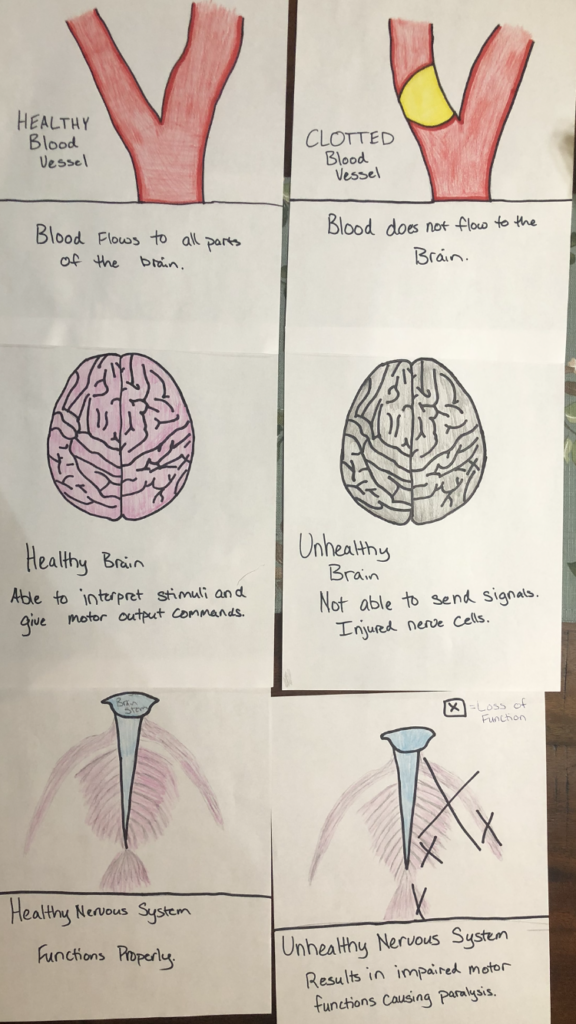
With unclothed blood vessels, blood is able to flow through the body allowing for normal function. When there is a clot of a blood vessel in the brain, a ischemic stroke occurs. This leads to a damaged brain and damaged nerve cells. The nerves cells, as a result of the damage sustained from the stroke are not able to communicate signals. For this reason, the body becomes impaired of function such as normal movements and control of facial features.
If they can not communicate then normal functions of the brain are impaired. The action potential is not able to follow through, as the nerve cells are damaged, so the muscle is not able to perform actions.
It is vital that the symptoms of a stroke be recognized immediately so that adequate care can be given to the patient. FAST is used to identify common symptoms. F stands for face, which identifies any droopiness in the face. A stands for arms, which ensures the individual has function of both arms. S stands for speech difficulty and T stands for time as it is imperative that you get them to a hospital as fast as possible. Specifically for ischemic strokes where there is a clot blocking the artery, medication might be used to dissolve the clot and restore blood flow to the brain. A thrombectomy also may be recommended if medication does not work. A thrombectomy is when a catheter is inserted in an artery near the groin, up the body, to the site of clot. A device used to retrieve clots, removes the clot and restores blood flow to the brain.

This project’s objective is to inform the reader about the differences between the central and peripheral nervous system; specifically in relation to how ischemic strokes effect their function. Ischemic strokes are discussed in detail, diving into what exactly they are, their issues related to the human nervous system, tell tale signs of strokes to be aware of, and what medical procedures can be used to regain proper bodily function. The media used within this project are hand drawn illustrations portraying different segments of the human body’s nervous system and what a clotted blood vessel looks like.